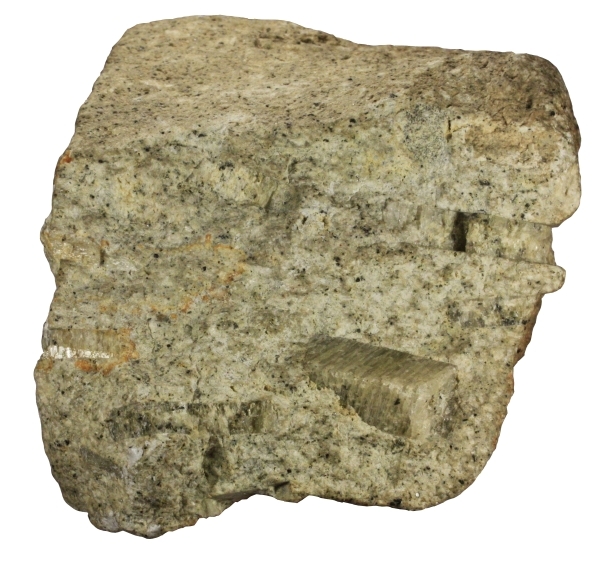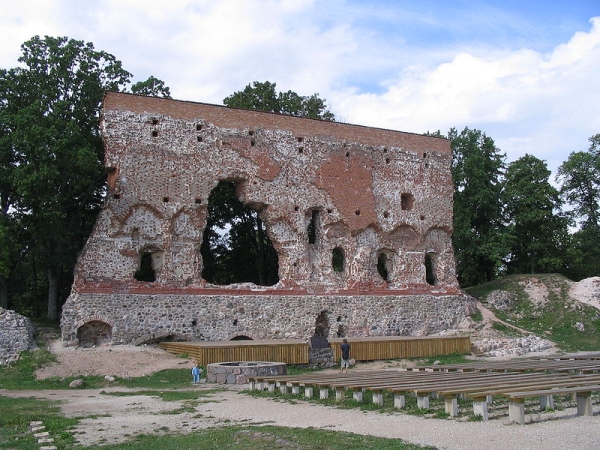An archeologist studying the ruins of a medieval castle in Estonia discovered a rock like which he had never seen before. He was curious enough to pick it up to ask geologists what it might be. I was not the geologist he asked help from. It was my supervisor. I noticed that rock on his book shelf and immediately knew that I have a rock just like that in my collection as well. This rock is trachyte and it is from Western Germany (the Eifel volcanic field). Trachyte is a volcanic rock. It contains less silica than rhyolite and more alkali metals (sodium, potassium) than dacite and andesite. It is generally light-colored and porphyritic. Our trachyte contains phenocrystals of sanidine, plagioclase, biotite, and hornblende in a groundmass composed of K-feldspar, sodic amphiboles, and diopside.

Trachyte (this sample is from my collection, not from the castle ruins). Note the large sanidine phenocryst in the lower right part of the picture. The diameter of the sample is 8 cm.
This rock is more specifically from the mountain of Drachenfels in the Siebengebirge volcanic range. According to Wikipedia there is even a legend associated with this rock: “A German legend recounts that Siegfried – the hero of the Nibelungenlied – killed a dragon living in a cave in the mountain, then bathed in its blood to become invulnerable. Hence, the mountain is named the “Dragon’s Rock” — Drachenfels”.
But what is so strange about all this? The castle I am talking about is really old. There was an Estonian stronghold already before the conquest of the Teutonic Knights (13th century). The wall from which this particular rock was found is built definitely later but probably no later than the beginning of the 16th century, when the whole castle, which belonged to the Teutonic Orders local branch Livonian Order, was completed. The castle was destroyed during the Livonian War which took place during the second half of the 16th century. Our bigger neighbors for some reasons have had an especially nasty habit throughout the history to settle many of their differences on our soil. In this particular case the belligerents were Russia on one side and Sweden, Livonian Confederation, Poland, and Denmark-Norway on the other.
It is really surprising that rocks (at least one) were brought here from Western Germany (few thousand kilometers away) when we have abundant supply of our own rocks. It only reminds me something I already know: that every rock indeed has its own story and sometimes this story is not entirely natural.

The ruins of Viljandi Castle in Southern Estonia. The western wall of the convent building. This is the tallest still standing construction of the castle. Photo: Wikipedia.
Leave a Reply